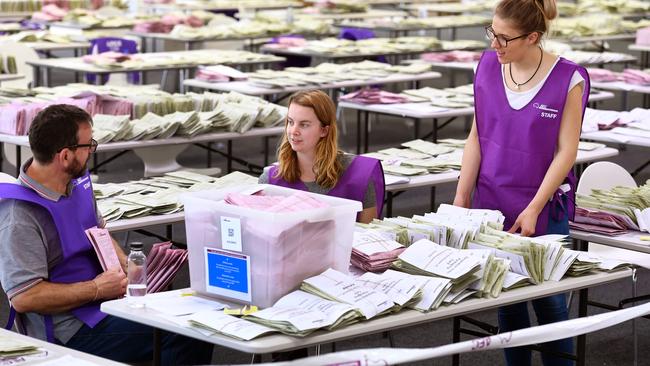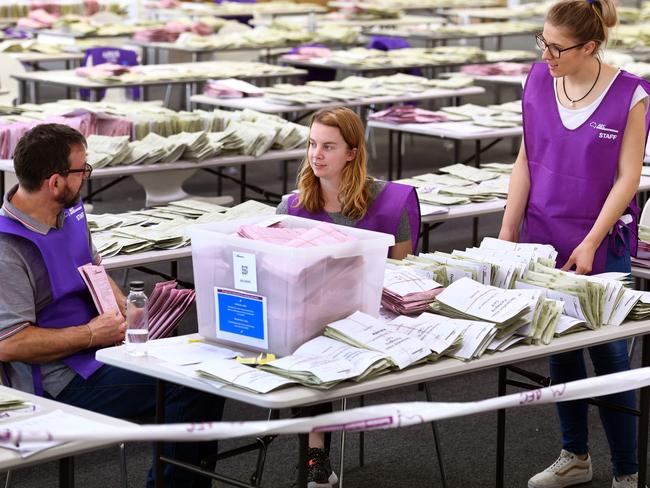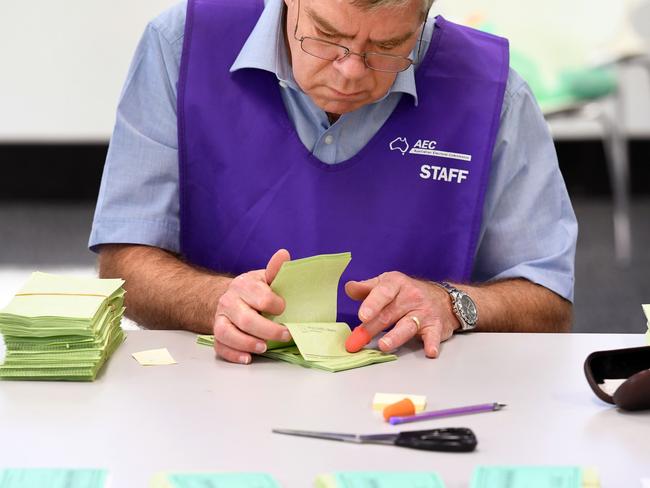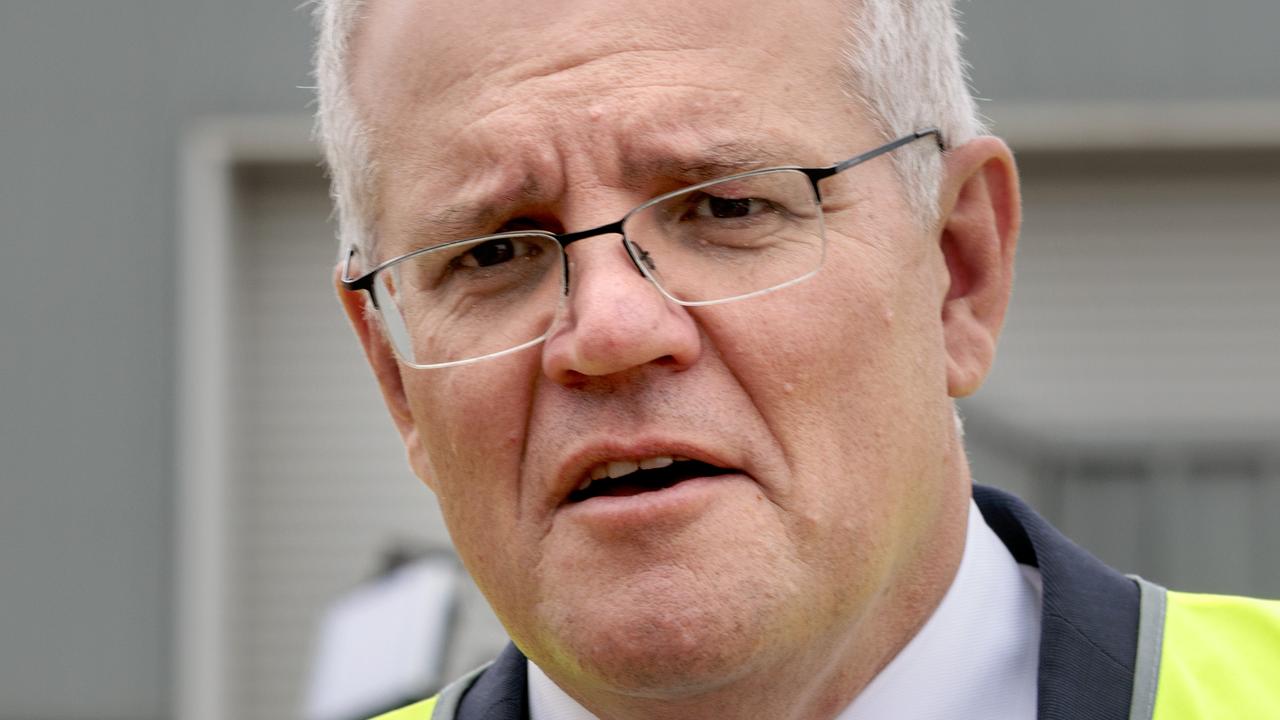Why everyone has a different seat count
THE Australian Electoral Commission has defended its slow vote count and results, which has left many voters confused.

THE Australian Electoral Commission has defended its excruciatingly slow vote count, which has also left many voters confused.
Those heading to the AEC website to check out who’s leading may leave confused about why its seat tally is so different to other predictions.
Early this week the commission had Labor on more seats than the Coalition, even though many experts were predicting the government would eventually win more seats.
This week ABC election analyst Antony Green highlighted this difference when he said the commission’s count was “just not right”.
Here’s how to make sense of it all.
WHY ARE THE PREDICTIONS SO DIFFERENT?
If you go onto the commission’s website you will see that as of 5.40pm AEST, it’s predicting 72 seats for the Coalition, 70 for the Labor Party, one seat for the Greens and four to other independents.
But go to the ABC results page, and you will see it has the Coalition on 72 seats and Labor on 67 seats.
There are two reasons why the results are so different.
The first is because there are three seats the commission is not including in its seat count. It describes these seats as “not yet determined” because they do not have preference counts for them.
But the ABC has included them in its seat count because analyst Antony Green uses a model to predict the preferences based on historical data.
“In all of those seats we know exactly who’s going to win so they’re included in wins in my site,” Mr Green explained during a Facebook Live today.
He is not the only one certain of the results in these seats. The Sydney seat of Grayndler is still included on this list, a seat which Labor’s Anthony Albanese claimed on election night.
The other seats not determined are Durack and O’Connor, and these are expected to go to the Liberal party.

THEN THERE ARE THE ‘SEATS IN DOUBT’
When it comes to guessing the result of the election, the thing everyone is watching are the “close seats”, or as ABC likes to call them, the “seats in doubt”.
There are a lot of them this year which is why the result is still unclear.
The commission only lists four seats as being close but still includes these seats as wins for the party that is leading in those electorates. The seats are Herbert, Hindmarsh, Forde and Gilmore.
This is different to the ABC election computer, which does not include close seats in its tally.
The ABC lists six seats as being in doubt, two more than the commission.
Less than 1000 votes separate the candidates in these close seats according to the AEC (as of 5.20pm AEST):
• Capricornia, Queensland — Labor ahead by 970 votes
• Cowan, Western Australia — Labor ahead by 757 votes
• Forde, Queensland — Liberal has overtaken Labor, and is now ahead by 130 votes
• Gilmore, NSW — Liberal ahead by 688 votes
• Herbert, Queensland — Labor improves its lead to 726 votes.
• Hindmarsh, South Australia — Labor is still ahead but its lead has almost halved to 140
The commission doesn’t include Capricornia or Cowan in its list of close seats.
According to its website, the commission defines a close seat as when more than five per cent of the two candidate preferred count has been done and the current margin is less than one per cent.
Mr Green has said he expects the Coalition to win 73 seats but could possibly get 76 seats, enough to form government.
WHY IS THE COUNT TAKING SO LONG?
There’s been a lot of discussion about the drawn-out counting process with the SBS getting in on the fun with a spoof article.
Antony Green Storms AEC Determined To Finish Counting By Himself | SBS Comedy https://t.co/taotDxv6xZ
— Lou Wilson (@louwilson100) July 6, 2016
As the Prime Minister explained yesterday, there are up to three million votes to be added to the count, and the result could still be a week away.
This is partly because the commission has to wait until next Friday, July 15, for any remaining postal votes to come in.
Mr Green said these votes took longer to count because officials had to mark each one off the roll and verify all the details before putting the vote in a ballot box for counting. Once a few thousand had been verified, officials would take the votes out for counting.
He has said he hoped these types of votes could be delivered electronically in the future to speed up the count.
Meanwhile the commission has defended its progress after criticism the count was taking too long.
“The AEC counted over a million votes yesterday (a mix of new votes added to the count and a further check of votes already counted),” the Australian Electoral Commissioner said in a statement.
“This was just one crucial step of the AEC’s conduct of the largest, most complex election in Australia’s history.”

The commissioner said proper process should be followed and speeding up delivery of the final result could undermine public confidence in that result.
He said he wanted to draw readers’ attention to the following facts.
Fact: the speed of the AEC’s count is driven by the Electoral Act, the ability of Australians to vote anywhere in Australia (or the world), and the geographic distances involved. Different jurisdictions have different arrangements; many advanced democracies including the UK, USA, Canada, France and Japan generally restrict each voter to a single, specific polling place. While the adoption of this approach (which would require changing the law) would provide more certainty in estimating ballot papers and staff, I am proud of the fact the Australian system allows all eligible Australians to vote, not just those who happen to be near a designated polling place on election day.
Fact: Australians often travel overseas, and this shouldn’t prevent them from having their say in an election. Votes cast overseas need to be returned to 150 different electorates across the country. This isn’t an insignificant number either; at the 2013 Federal Election, more than 75000 Australians cast a vote overseas.

Fact: The complex exchange of a very high volume of declaration votes is not new — more than 2.4 million declaration votes were exchanged and counted at the 2013 Federal Election; it is also not because of lost ballot papers in 2013. The declaration vote exchange is a process required by law and it has been a requirement for many elections.
Fact: The AEC’s website is not frozen. The AEC is responsible for providing the actual number of ballot papers counted; prediction of election results is, quite rightly, the role of others. The AEC’s focus — as it should be — is on delivering a reliable and trustworthy count of the ballot papers cast by the Australian public.
Fact: The Electoral Act requires the AEC to wait for up to 13 days after election day to receive any outstanding postal votes. This is a well-known fact; it is certainly not new and is not something the AEC simply chooses to do of its own free will. To truncate this period would not only breach the law, it would disenfranchise Australians. Additionally, in very close seats those last few postal votes (even those received on the 13th day) may well decide who wins.
Fact: The AEC conducts a number of activities at the same time as the count, including the transfer of ballot papers to where they need to be counted. To achieve this, the AEC has to rely on postal and courier services as with every other Australian industry.




